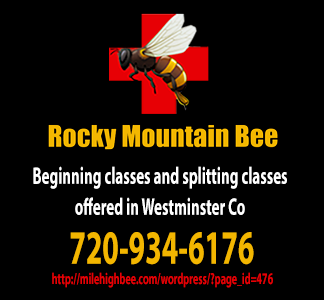Emerald Ash Borer
The Emerald Ash Borer was discovered in Boulder on September 23, 2013. The Emerald Ash Borer has an established track record of killing ash trees–all ash trees that become infected–since it began its march across the urban landscape of America and Canada in 2002. Do you have an ash tree and are you worried about this threat?
How to identify an ash tree: http://emeraldashborer.info/files/E2892Ash1.pdf (Note: this does not include the Mountain Ash, which is not a true ash tree.)
1. Educate yourself on this pest. Here are some general resources:
USDA-APHIS
National Invasive Species Information Center
EmeraldAshBorer.info
Colorado Department of Agriculture’s EAB Website Bi-weekly updates available on the site.
CSU Entomology Professor Whitney Cranshaw’s Extension Fact Sheet on Emerald Ash Borer
City of Boulder’s EAB site
Think you have Emerald Ash Borer but just aren’t sure? Check out this CSU Fact Sheet on EAB look-a-likes.
2. Determine the threat. Are you IN the quarantine area? The current quarantine area is Boulder county. Are you CLOSE to the infested area? Check this map.
3. If your ash tree is within an infested area, you will be faced with a decision to treat or not. The EAB will kill untreated ash trees, and effective pesticide treatment is available. Prophylactic treatment is expensive because it is ongoing. You may want to consider the cost of treatment – each ash will require treatment annually/biennially for the rest of its life. It may make more sense to replace a small tree now than treat for decades. If the ash is more than 30% gone from EAB, in the utilities line, not a healthy or beautiful tree, consider replacing. Finally, consider that treatment makes the entire tree poison – roots, trunks, branches, leaves, pollen, and treatment requires keeping it poison for the rest of its life. The treatment options are highly effective with EAB, but also kill another host of pollinators and beneficial insects. You may decide that only specific highly valuable ash trees, or no ash trees, will be treated.
Utilize this tool, the Tree Benefit Calculator, to your advantage, but remember, IT DOES NOT INCLUDE ENVIRONMENTAL COST. It is, indeed, heartbreaking to lose a large ash but is it better to wreak havoc on the rest of the ecosystem in a vain attempt to save it?Perform a cost-benefit analysis to determine if your ash tree is worth saving.
4. Consider planting a replacement tree NOW. Here is a list of trees recommended for the Front Range. Front Range Tree Recommendation List. Plant for diversity–avoid the next pest disaster.
5. Get a second opinion or three. Many tree experts in this area have weighed in on the subject. Here is a compilation of some of their thoughts on preservation and treatment.
Whitney Cranshaw’s 2014 EAB Treatment Recommendation
Mikl Brawner–Harlequin’s Gardens web page and Colorado Gardener
6. Consider Integrated Pest Management. Don’t move firewood, logs or infested nursery stock! Practice the timely removal of infected trees.
Emerald Ash Borer: Homeowner Guide to Insecticide Selection, Use, and Environmental Protection A nice publication from University of Minnesota Extension (and others)
North Dakota’s Guide
Apparently a woodpecker feast!
There is also a bit of work being done on fungi and parasitic wasps as predators of the borer.
7. Assess your options for treatment recognizing that there are trade-offs to be made and the decisions made will have ramifications throughout the ecological system.
CSU Entomology Professor Whitney Cranshaw’s observations on Risk Assessment and EAB.
Insecticide Options for Protecting Trees from Emerald Ash Borer
Control Options for Emerald Ash Borer in CO
Insecticide Options for Protecting TREES from Emerald Ash Borer (Note: not BEES!)
8. Thoroughly evaluate your chemical controls if you have decided upon treatment as your preferred course of action.
Tree-Azin
Tree-age (Emamectin Benzoate)
Imidacloprid
Dinotefuran
Note that some products are sprayed or drenched, which are more prone to collateral death. Others are injected, which requires drilling into the tree. If you decide to treat, please apply when pollinators are not out and remove all flowers from around the tree. Using a licensed arborist will help with label and legal compliance.
9. Educate your neighbors.
10. Educate your local government, HOA and schools.
While the CSBA recognizes the severity of the EAB threat, it is gravely concerned with the economic and environmental consequences of many of the pesticide choices.












